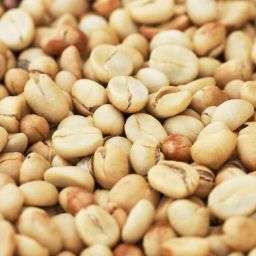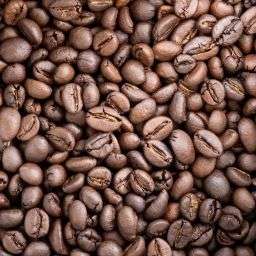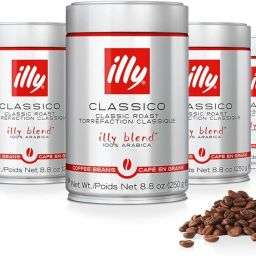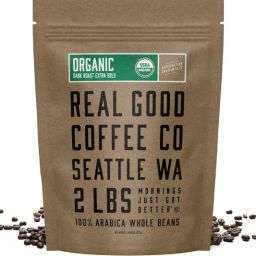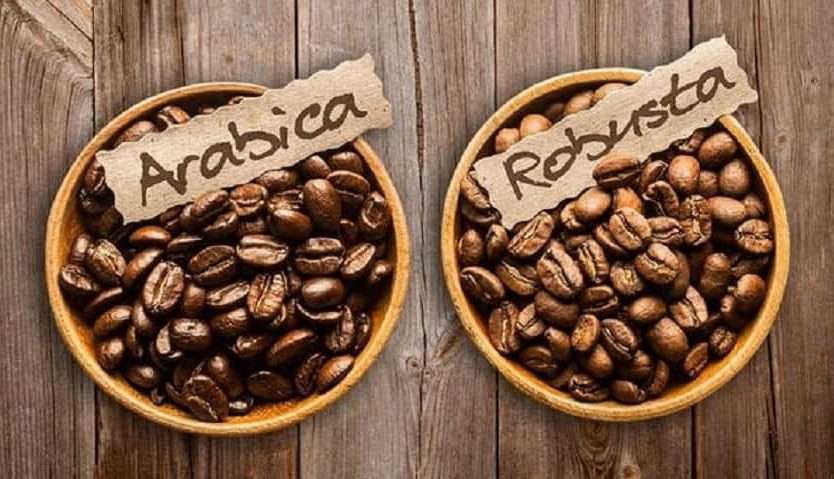
The world of coffee beans is vast and varied, with each type offering its own unique flavor profile, aroma, and characteristics. At the heart of this diversity are two primary types of coffee beans that dominate global consumption: Arabica and Robusta. These beans differ significantly in their cultivation environments, taste profiles, and applications in coffee brewing.
Arabica beans, known for their sweet, complex flavors, are the most popular coffee beans worldwide, accounting for the majority of coffee consumption. Robusta beans, on the other hand, are valued for their strong, robust flavor and higher caffeine content, making them a popular choice for espresso blends.
This article focuses on these two most common coffee beans, exploring their differences, similarities, and the unique qualities that make each of them stand out in the coffee world.
Key Takeaways
The critical differences and similarities between Arabica and Robusta beans can be summarized as follows:
- Arabica Beans: Known for their sweeter, more complex flavors, Arabica beans are the gold standard in the coffee industry. These beans thrive in higher elevations and specific climates, which contribute to their nuanced flavor profiles. However, their cultivation comes with challenges, as they are more susceptible to pests and diseases.
- Robusta Beans: Characterized by their hardiness, Robusta beans have a stronger, more bitter taste. They contain more caffeine, which not only contributes to their robust flavor but also provides a natural defense against pests. Robusta beans are typically used in espresso blends for their ability to produce a rich crema and add strength to the coffee.
Arabica Beans
Origin and Characteristics: Arabica coffee beans, scientifically known as Coffea arabica, are the most widely consumed coffee beans globally, making up about 60-70% of the world’s coffee production. Originating from Ethiopia, these beans are praised for their delicate flavors and varied aromatics. Arabica plants are typically grown in high elevation areas, which contributes to the bean’s complexity.
Preferred Growing Conditions and Flavor Profile: Arabica beans thrive in cool, subtropical climates with rich, volcanic soil. They are often grown at elevations ranging from 600 to 2,200 meters. These conditions slow the plant’s growth, allowing more time for the bean to develop its flavors and aromas. Arabica coffee is known for its smooth, sophisticated taste with hints of fruit and sugar, higher acidity, and lower bitterness compared to Robusta beans.
Robusta Beans
Origin and Characteristics: Coffea canephora, commonly known as Robusta, is the second most popular coffee bean. It originated in sub-Saharan Africa and is known for its robustness, as the name suggests. The Robusta plant is hardier than the Arabica, able to withstand harsher climates and lower elevations. It is less susceptible to pests and diseases, which partly explains its appeal to growers.
Differences from Arabica: In terms of cultivation, Robusta beans do not require the high elevations that Arabica does, thriving instead in hot, humid conditions at sea levels up to 800 meters. They have a stronger, more bitter taste with a grain-like overtone and a higher caffeine content, which makes them less susceptible to pests. This caffeine content not only contributes to the bean’s bitterness but also its ability to produce a better crema in espresso.
Cultivation and Production
The cultivation and production of Arabica and Robusta beans differ significantly across the globe due to their distinct growing conditions and consumer demands. Arabica beans are predominantly grown in Latin America, Eastern Africa, Asia, and Arabia, requiring specific altitude, temperature, and moisture. The delicate nature of Arabica plants demands meticulous attention to shade, pruning, and protection from pests.
Robusta beans, in contrast, are largely produced in Western and Central Africa, Southeast Asia, and parts of South America. Their resilience to warmer climates and lower altitudes allows for a broader range of growing conditions. Robusta plants can produce fruit quicker and more abundantly, which, coupled with their resistance to diseases, makes them a cost-effective option for farmers.
Global Production Landscape: The global coffee landscape is characterized by a higher production of Arabica beans due to their popularity among consumers for their superior taste and aroma. However, Robusta beans command a significant share of the market, particularly in the instant coffee sector and in blends designed for espresso, due to their strong flavor and crema-enhancing qualities.
The balance between the two types of beans in the market is influenced by factors such as climate change, economic considerations, and evolving consumer preferences. This dynamic interplay ensures that both Arabica and Robusta beans remain integral to the global coffee industry.
Flavor Profiles and Roasting
Flavor Nuances: Arabica and Robusta beans each offer distinct flavor profiles that cater to diverse palates. Arabica beans are celebrated for their wide range of flavors, from sweet and soft to sharp and tangy, often with fruit-like aromas and a higher acidity that contributes to a wine-like taste.
This complexity is a hallmark of Arabica coffee, making it a favorite among connoisseurs. On the other hand, Robusta beans are known for their stronger, more assertive flavor, with a pronounced bitterness and a full-bodied character. This robust taste often carries earthy or woody notes, and a peanut aftertaste, making it suitable for those who prefer a potent coffee experience.
Impact of Roasting: The roasting process plays a critical role in shaping the final taste of the coffee. Light roasting can highlight the unique characteristics of Arabica beans, accentuating their acidity and allowing their intrinsic flavors to shine. Medium roasts offer a balance, enhancing the body and sweetness while maintaining some of the beans’ original flavors.
Dark roasts, favored for Robusta beans, develop rich, bold flavors with a decrease in acidity, bringing forward the beans’ inherent strength and making them ideal for espresso blends.
Economic Impact
Global Coffee Market: In the global coffee market, Arabica and Robusta beans serve complementary roles. Arabica, with its superior flavor profile, commands higher prices and is sought after by specialty coffee markets and aficionados. Robusta’s resilience and higher yield make it a staple in the commercial and instant coffee sectors, where its strong flavor and crema-producing qualities are prized.
Price, Demand, and Sustainability: The demand for Arabica beans often leads to higher prices, reflecting their perceived quality and the costlier cultivation practices. Conversely, Robusta beans are generally cheaper but essential for maintaining the coffee industry’s balance, offering affordability and versatility. Sustainability issues, including climate change and farming practices, increasingly influence both types of coffee beans, pushing the industry towards more sustainable cultivation methods to ensure the long-term viability of coffee production.
Practical Guide
Choosing Between Arabica and Robusta: When selecting coffee beans, consider your flavor preference and the coffee experience you seek. If you prefer a smooth, flavorful coffee with a wide range of taste nuances, Arabica beans are the ideal choice. For those who enjoy a strong, bold coffee, particularly in an espresso or a blend that stands up well to milk and sugar, Robusta beans may be more suitable.
Identifying Beans in Blends and Single-Origin Coffees: To distinguish between Arabica and Robusta beans, look at the labeling. Single-origin coffees will often specify the bean type, while blends may highlight the inclusion of Arabica or Robusta beans. Understanding the characteristics of each can help you make an informed decision, aligning your coffee selection with your taste preferences and the brewing method you plan to use.
Brewing the Perfect Cup
Brewing Methods: For Arabica beans, methods that accentuate their delicate flavor profile, such as pour-over, drip coffee, or French press, are ideal. These methods allow for precise control over water temperature and brewing time, critical for extracting the full spectrum of flavors. Robusta beans, with their robust flavor and higher caffeine content, excel in espresso brewing. The high pressure of espresso machines extracts the intense flavors and the rich crema that Robusta beans are known for.
Grind Size, Water Temperature, and Brewing Time: The grind size should be adjusted according to the brewing method. A finer grind is suitable for espresso, while a coarser grind works better for French press or pour-over. Water temperature is crucial; ideally, it should be between 90°C to 96°C (194°F to 205°F) to extract the coffee effectively without burning the beans.
Brewing time will vary by method: espresso takes about 20-30 seconds, pour-over can take 2-4 minutes, and French press around 4 minutes. Experimentation is key to finding the perfect balance for your taste.
FAQs
Health Benefits: Both Arabica and Robusta beans contain antioxidants and have been linked to various health benefits, including improved mental alertness and reduced risk of certain diseases. However, the higher caffeine content in Robusta beans may make them less suitable for those sensitive to caffeine.
Caffeine Content Differences: Robusta beans contain almost twice as much caffeine as Arabica beans. This not only impacts their flavor, making them taste stronger and more bitter but also affects their stimulating effects.
Storage Tips: Coffee beans should be stored in a cool, dark place in an airtight container. Avoid exposure to air, moisture, and light to maintain their freshness and flavor for as long as possible.
Final Thoughts
This article has explored the nuanced worlds of Arabica and Robusta coffee beans, from their distinct flavor profiles and preferred brewing methods to their economic impact and practical brewing tips. Understanding these differences enables coffee enthusiasts to make informed choices and enhance their coffee experience.
We encourage readers to experiment with both types of beans, exploring various brewing methods and adjustments in grind size, water temperature, and brewing time to discover the perfect cup that suits their personal preference. Dive into the rich diversity of coffee beans and embrace the journey towards your ideal coffee experience.




